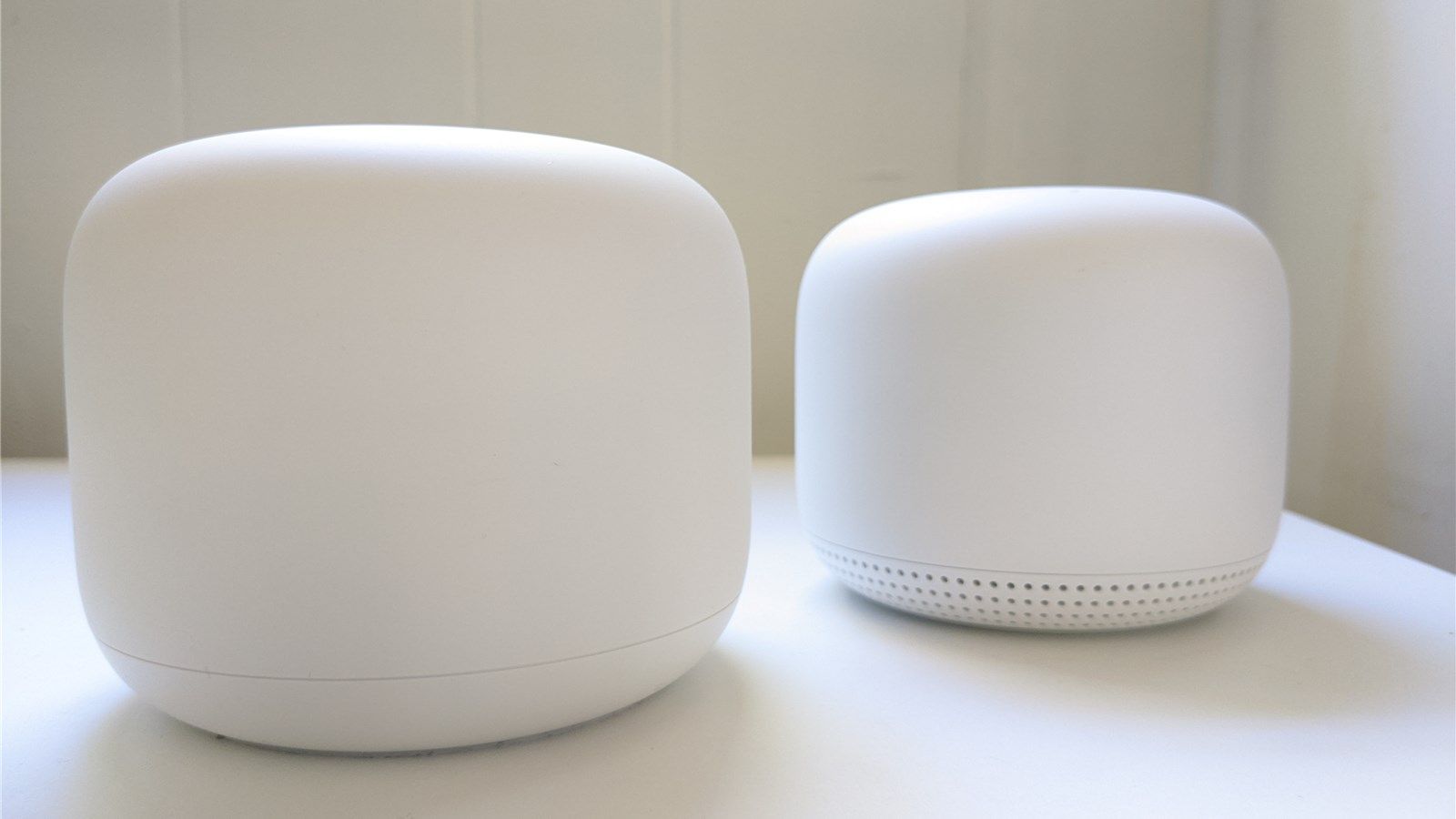
Google Wifi has been my favorite mesh Wi-Fi system since it launched at the end of 2016. The next generation, which takes on the Nest name, is now available, and it’s a decided upgrade in [almost] every way.
Nest Wifi is a progression from Google Wifi, with notable features that honestly just make sense—like the fact that the point units have built-in Nest Minis (essentially, anyway), so you get Google Assistant baked right into your Wifi points. It’s such a smart decision.
But Nest Wifi isn’t just Google Wifi with Nest Minis tucked into the bottom of the points. It has better radios for more coverage, which ultimately means you can cover more area with fewer points. A house that would’ve taken three Google Wifi units (Google Wifis? Why are products so hard to make plural these days?) can get full coverage with just two Nest Wifi units (the router and one point). Here’s a look at Nest Wifi’s range:
- One router: Up to 2200 square feet
- One router, one point: Up to 3800 square feet
- One router, two points: Up to 5400 square feet
That’s a lot of coverage from just one or two devices—Google tells me that one router and one point should cover the majority of houses in the US, which makes Nest Wifi easier to set up and manage. But it gets better.

It’s Backward (and Forward?) Compatible with Google Wifi
Best of all, you can mix-and-match Nest Wifi with Google Wifi. You could theoretically add Nest Wifi points to your existing Google Wifi setup, but really it makes more sense to add Google Wifi units to a Nest Wifi setup since the Nest router is an overall improvement over the Google Wifi router.
So, for example, since I’ve been using Google Wifi for the better part of the last three years, I already have a Google Wifi router and two points. Before setting up Nest Wifi, I factory reset all three Google Wifi devices, then replaced the router and one point with Nest Wifi. I left one Google Wifi point in place.

Why, you ask? Because while Nest Wifi is better than Google Wifi, it also has a few drawbacks—like the fact that the points no longer have Ethernet ports. I had things wired to each of my Google Wifi points—my desktop on one and Hue bridge on another—which you can’t do with Nest Wifi. I just switched my desktop over to a Wi-Fi connection, which was fine. I can’t even remember why I was using a wired connection in the first place. Heh.
But the Hue bridge was another issue altogether. I used to have it connected directly to the Google Wifi router, but my office lights (which are on the other side of the house) often couldn’t connect to the bridge. So I added a Wifi point in the dining room, which is more centrally located, and attached the Hue bridge to that. Problem solved.
With Nest Wifi, that scenario isn’t possible. If I wasn’t already a Google Wifi user, then I’m not sure what I would’ve done—move the Hue bridge and hope for the best? Probably initially. Buy an additional Google Wifi point just for the Ethernet port? Maybe. I honestly don’t know.

Read the remaining 31 paragraphs
from How-To Geek https://ift.tt/34qahez

No comments:
Post a Comment